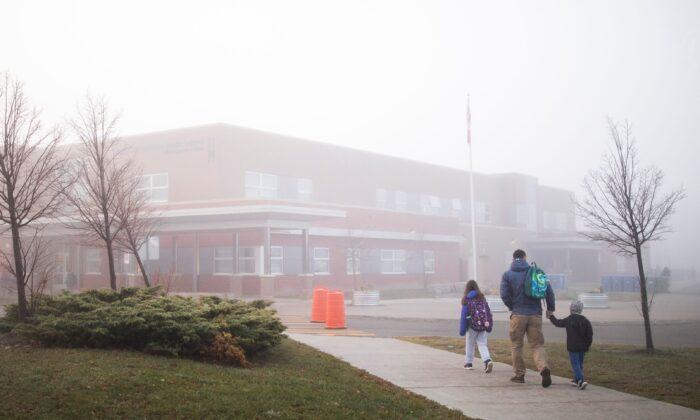Commentary
All high school diplomas are equal, but some diplomas are more equal than others (apologies to George Orwell for shamelessly appropriating and modifying this quote from “Animal Farm”).
On one hand, all high school diplomas are equal. Apart from mature students, a diploma is the minimum requirement for being accepted into college or university. If the school is recognized by the province, it shouldn’t matter which high school a student graduated from.
Story continues below advertisement
Except it does matter—because some schools have higher standards than others. This is due to a number of factors including the stability of the teaching staff, level of community support for academic standards, and effectiveness of individual teachers.
When colleges and universities decide which students to admit, they typically place heavy emphasis on
grade point averages because students with higher marks usually have a greater mastery of the subject matter than students with lower marks.
However, colleges and universities also know that students typically get much
higher marks in high school than they do in university. A straight A high school graduate might be only a B or C student in college or university. This is particularly true in demanding programs such as engineering.
The University of Waterloo’s undergraduate engineering program is considered one of the most prestigious programs in Canada. As a result, they receive far more applications than spaces available. To ensure they admit students who are most likely to succeed, Waterloo gives priority to students with the highest marks. However, Waterloo also knows that some schools are more likely to inflate grades than other schools, so it uses an
adjustment factor when evaluating a student’s application accounting for the fact that an 85 percent from a school with rigorous standards is better than a 95 percent from a school with lower standards.
In a well-meaning attempt to help students get into their desired college or university, some teachers give much higher marks than they should. While this might seem like a generous thing to do, grade inflation is harmful to students because it gives them a false sense of their own preparedness. These are the students who are most likely to crash and burn when faced with challenging university courses.
Fortunately, there’s an obvious way to correct this problem—expand standardized testing. In Ontario, students write
standardized tests in Grades 3, 6, and 9. Because these tests are created by the Education Quality and Accountability Office and administered to all students at the same time, it’s possible to compare results from one school to another. This makes the data more reliable than data from teacher-created tests.
Story continues below advertisement
Thus, the antidote to grade inflation is to require all Grade 12 students to also write standardized exams in their core subjects. Not only would this discourage teachers from artificially inflating student grades, it would also ensure that at least a portion of each student’s final course mark is based on the same assessment. This would eliminate, or at least reduce, the need to handicap marks from schools with lower standards.
There’s precedent for moving in this direction. Alberta Grade 12 students write
diploma exams in most of their subjects that are worth 30 percent of their final grade. This ensures that their final marks are a combination of teacher-created assessments and standardized assessments. A balanced approach to assessment makes sense, particularly when we consider the importance of preparing students for success in college and university.
In addition, expanding standardized testing would be a popular move with parents. A recent Leger poll, for example, found that 80 percent of Ontario parents of school-aged children
support standardized testing in core subjects of reading, writing, and mathematics. The same survey showed similar levels of support for standardized tests in other provinces. Thus, not only would bringing in Grade 12 standardized tests help correct the grade inflation epidemic, parents would also overwhelmingly support the tests.
There’s no need for some high school diplomas to be more equal than others. Standardized testing can help ensure that all students are assessed fairly and accurately.
Michael Zwaagstra is a public high school teacher and senior fellow with the Fraser Institute.
Views expressed in this article are opinions of the author and do not necessarily reflect the views of The Epoch Times.





